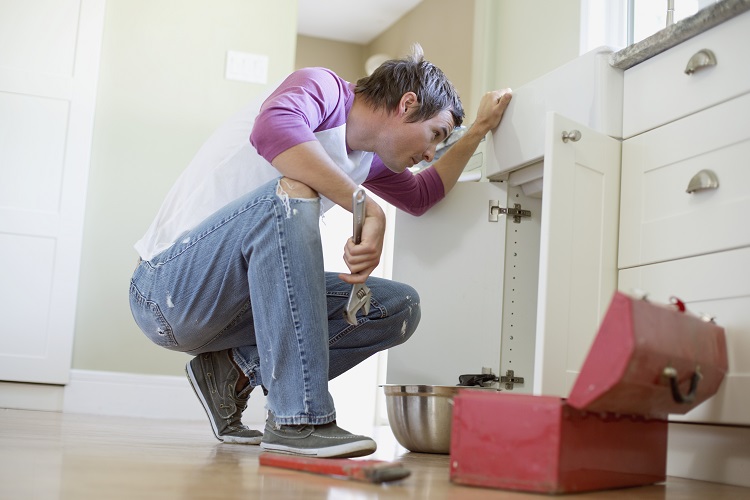As a first-time homeowner, it pays to know the basics of plumbing. Of course, plumbing issues do call for a professional hand. However, there are certain aspects you should know, as it can save your day in case of leaks, broken pipes, or clogged toilets. By the time your plumber arrives, it can be too late and the onus of saving your home from turning messy lies on your shoulders.
Besides, knowing the plumbing basics can save you a few dollars now and then. You need not call in the experts to deal with the basics. Nevertheless, professionals at Clover Services will help you out if there’s a problem beyond a novice’s capabilities.
In this post, you will get to know about some plumbing basics that every homeowner will find beneficial.
Basics To Master For Mitigating Plumbing Woes
Your home has a complicated system of drains, pipes, and appliances. Working coherently, these systems significantly ease up your life. However, disasters in plumbing may turn out any day, and we all encounter these issues at some time or the other. Once you know the basics, handling these situations would no longer be a headache.
Here are some key aspects about your plumbing system that you should be aware of:
Know The Location Of Your Water Main
In case of plumbing issues like leaks or overflowing cisterns, you need to turn off the water main at the outset. It makes sense to know the location of this water main. In most homes, you will find it close to the water heater in the basement.
Find the wheel or lever connected to the shutoff valve in this water main. Once you turn off this valve, your home would be disconnected from water flow. Shutting off this main valve will come in handy, especially if you have a burst or leaking pipe.
Monitor Water Pressure
It’s imperative to check the water pressure coming into your home. It ensures that your plumbing system is healthy. Get across to a hardware store and purchase a pressure gauge. Using these devices is pretty simple, and you would be able to monitor the water pressure regularly.
For better accuracy, go for a modern solution like a smart water monitoring system. This would also help you track the usage of water, detect leaks, and gather updates on the condition of your system in real-time.
Dealing With Clogged Drains
Kitchen or bathroom drains develop clogs at some point. Particularly, when you take showers, body hair and dirt develop over time. In these cases, you might be tempted to use liquid drain cleaners. This might aggregate the situation.
Here are a few steps that can mitigate your woes:
• Firstly, try using some DIY home remedies like boiling water, baking soda, and vinegar.
• If the blockage persists, you might use the traditional plunger for unclogging the drain.
• Your final resort would be to use harsh chemicals. However, professionals recommend not to use them. This is because these chemicals may cause damage to your ceramic accessories.
You may reach out to a professional plumber if all these tactics go futile.
Keeping Your Toilet In Good Shape
Clogged toilets can be a mess to deal with. In most cases, homeowners hire professionals to get the dirty work done. But homeowners should try and prevent this situation from its inception. Disposing of toilet paper, baby wipes, cotton swabs, paper towels, and other wrong things in the toilet can lead to nasty blockages.
You might try clearing the blockage using a plunger. Also, you need to keep your eyes open for possible leaks in your toilet. Insert some food colors in the cistern and have a look at the color of water accumulating in the toilet bowl. If you find colored water there, it indicates a leak.
Fixing A Running Toilet
If you have a running toilet, you may try and address the issue before reaching out to the plumbers.
• Firstly, shut off the water supply valve of the toilet and open the tank. Have a look at the chain. Now, this may require some adjustment or complete replacement. Inspect the arm that holds the chain up–whether or not it works properly.
• You might also flush the toilet to discharge the accumulated water into the tank. Now, look out for signs of tear in the flapper. If you need to get it replaced, make sure to remove it and insert a fresh flapper into the overflow tube. Get the chain replaced when it reaches the bottom.
• At times, lowering the float in the tank might work. Turn the screw for adjustment or slide the rod, depending on the requirement of your model. Now when you flush the toilet, check whether the water level goes over the overflow tube.
Cleaning Your Gutters
Although gutters are not a direct part of the home’s plumbing system, they do contribute by challenging water outside. In case you have clogged gutters, it may lead to the pooling of water on your roof. It may eventually lead to water leaks, messing up the structural integrity of your home.
After all, homeowners should be concerned with the expenses that tag along with these damages. Make sure to clean the gutters late in the summer, or at the onset of spring. You should also clear leaves and other deposits on your roof from time to time.
Dealing With Dripping Faucets
Dripping faucets ultimately lead to higher water bills. A faulty part in the system or high water pressure may lead to dripping faucets. Firstly, determine what kind of component you have. Check out the kind of seals in your taps.
You will mostly come across ball faucets in kitchen sinks. On the other hand, disc and cartridge faucets are generally integrated into bathrooms. You may try adjusting the water pressure, or call in an expert to help you out.
Endnote
It’s always a wise idea to seek professional help for plumbing issues. As a first-time homeowner, you should never go beyond your ambit of DIY fixes. This explains why most households call in expert plumbers when they fail to make out what’s wrong with their system. After all, professional support can help you fix the woes quicker, and also mitigate unnecessary expenses.




